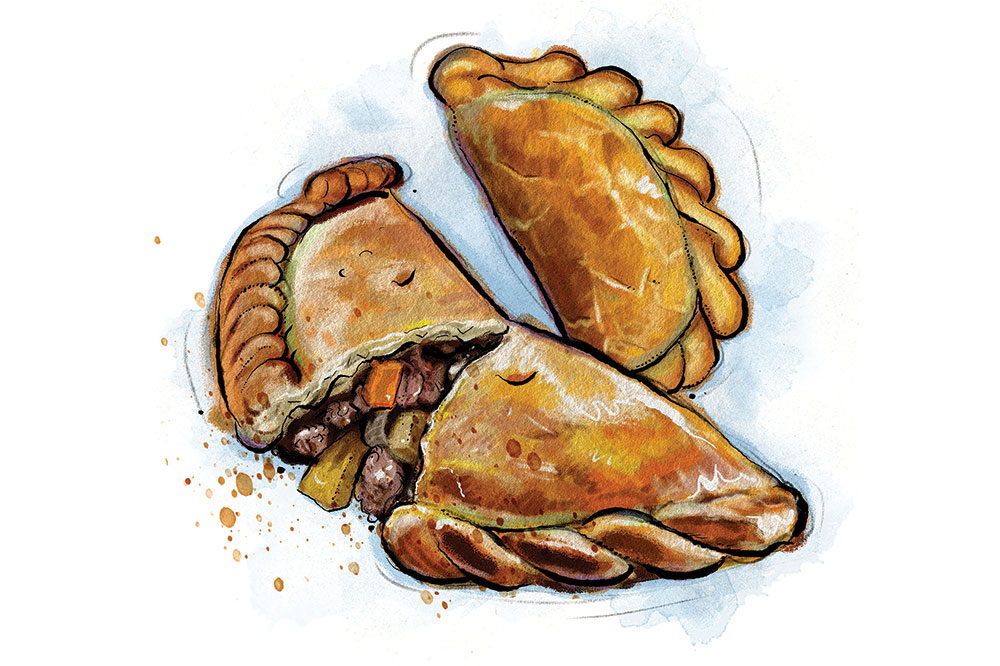When it comes to traditional food, there is always regional pride to contend with. Many recipes are intrinsically connected to the area from which they have sprung: Pontefract cakes, Chelsea buns, Lancashire hotpot, Welsh rarebit. They represent heritage and tradition – edible history. You must tread carefully to avoid offending regional heritage, or just making silly mistakes. I certainly feel on safer ground making pronouncements from my Salford home on Eccles cakes than I do on Ecclefechan tart.
But when it comes to the Cornish pasty, the people of Cornwall have taken ownership a step further. In 2011, the Cornish pasty was granted Protected Geographical Indication by the EU, which dictates where – and how – a true classic Cornish pasty can be made. This is the same protection enjoyed by products like champagne, Parma ham, and Comté cheese.
They are filling, nutritious and economical. Essentially they are their own packaging
It wasn’t easy for the Cornish to gain this geographical protection – it was a nine-year process – but it’s understandable that they felt it worthwhile.

Get Britain's best politics newsletters
Register to get The Spectator's insight and opinion straight to your inbox. You can then read two free articles each week.
Already a subscriber? Log in








Comments
Join the debate for just $5 for 3 months
Be part of the conversation with other Spectator readers by getting your first three months for $5.
UNLOCK ACCESS Just $5 for 3 monthsAlready a subscriber? Log in